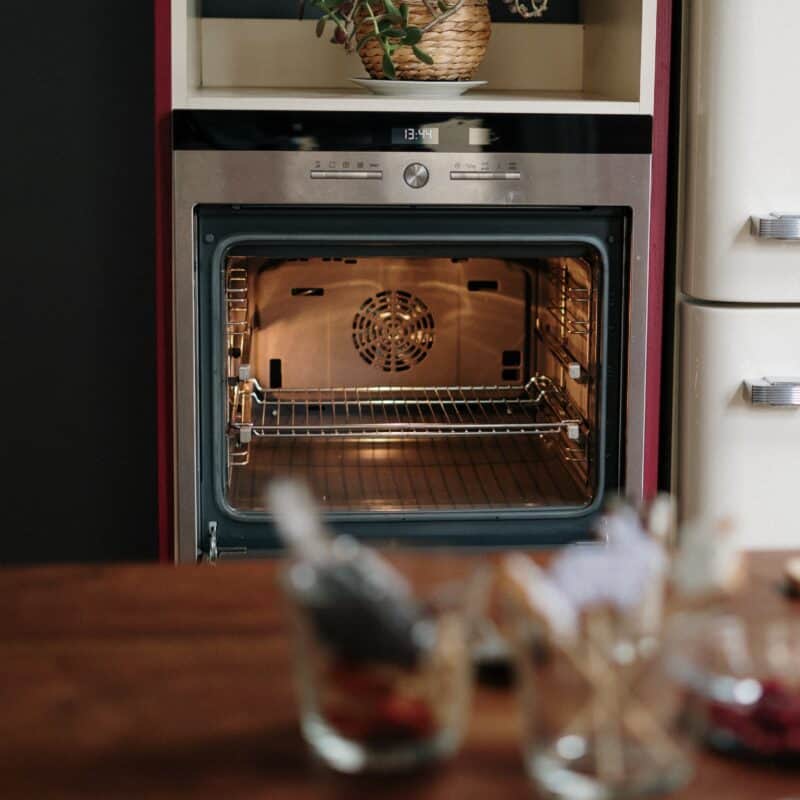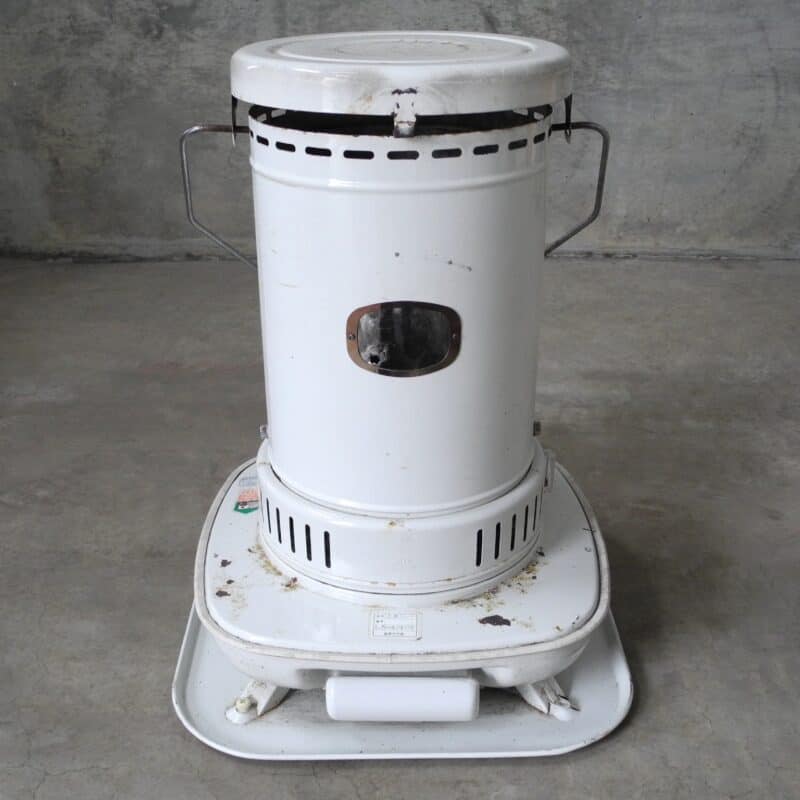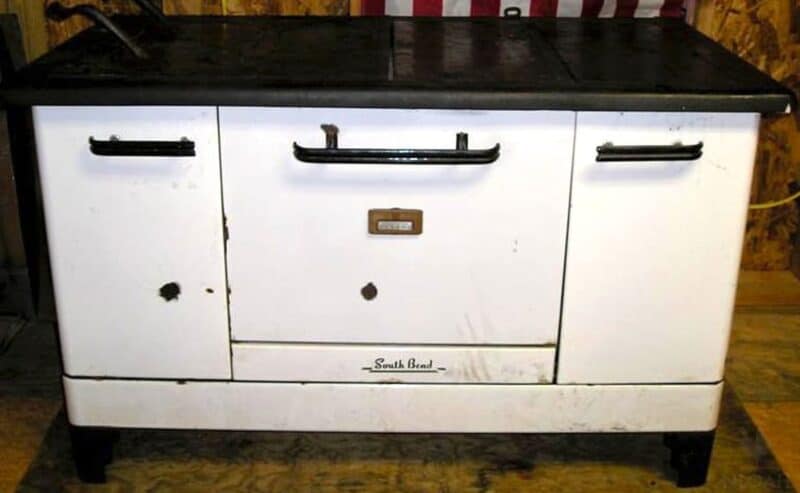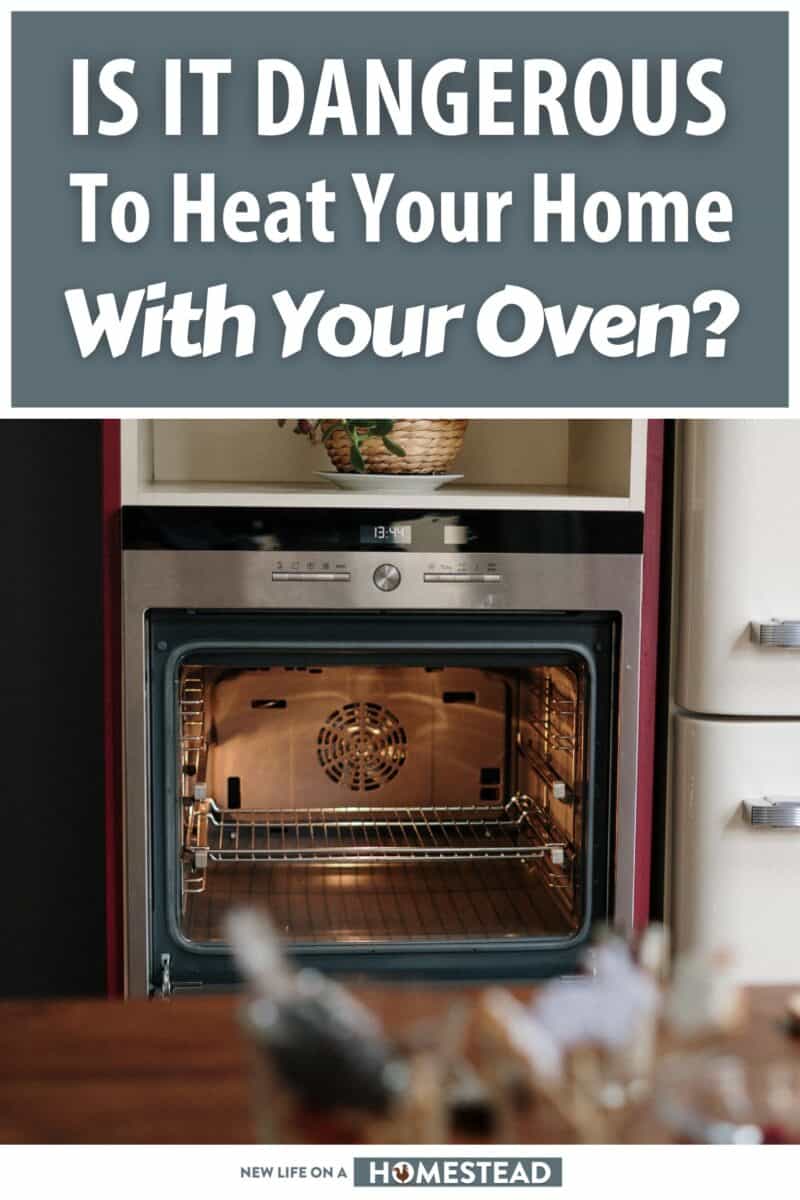When winter’s chill sets in, you might be left shivering in your own home, even with the furnace roaring.

For millions of people around the world with inadequate heating in their homes or apartments, their ovens might be used to help heat up the living space.
It’s a convenient way to warm, but is it dangerous to use your oven for heating?
Yes, heating your home with your oven may be dangerous. Gas ovens release dangerous carbon monoxide (CO) into the air, an odorless and colorless gas that can cause serious health problems (or worse) at high enough concentrations.
Electric ovens are safer, but prone to malfunction when run at high temps for long periods of time.
While it might be tempting to heat up a room by cracking the door on your oven and letting it run full tilt, you’d be well advised to avoid the temptation.
In a best-case scenario, using your oven for supplemental or emergency heating is very inefficient, and at worst highly dangerous. Keep reading to learn more.
The Dangers of Using an Oven for Home Heating
Using an oven for home heating is a bad idea, and depending on the type of oven, it can be quite dangerous.
Gas ovens are powered by burning natural gas or propane, or occasionally butane. This combustion process, no matter how efficient, releases carbon monoxide (CO) as a byproduct.
CO is an odorless and colorless gas that can cause serious health problems in humans, and may even be fatal.
CO is particularly dangerous because it is impossible to detect without a specialized CO detector installed in the home or until victims, correctly, assess their own symptoms and act before it is too late.
No oven that I am aware of has built-in CO emission or oxygen level detection capability.
You should have a working CO detector in your living space regardless, but you’ll be needing it if you try to heat your home with a gas oven.
Electric ovens, by comparison, are much safer. Electric ovens work by using resistors to generate heat; these resistors are usually located at the bottom or top of the oven box.
When an electric oven is turned on, electricity flows through these resistors and they begin to heat up.
The heat generated by the resistors then radiates outwards into the oven cavity, where it cooks food- no carbon monoxide is released during operation.
However, electric ovens are not designed to be run at high temperatures for the prolonged periods of time typical of home heating demands, and most will eventually overheat and break or shut down if used in this way.
If an electric oven is left on for too long, the heat from the resistors will build up and may damage the wiring or other electrical components in the oven. This poses a secondary fire hazard.
No matter how you square it, ovens are just not designed for heating a space over time.
Effects of Carbon Monoxide Poisoning
The single, biggest risk associated with using an oven for home heating purposes is associated with gas ovens and the release and buildup of CO gas.
CO gas is a subtle and insidious killer, claiming quite a few lives every single year, usually during the colder seasons when people attempt to warm up their space in a dangerous way!
At lower concentrations, CO poisoning symptoms include headache, fatigue, shortness of breath, and dizziness. These symptoms are often mistaken for the flu or other common “bug”.
However, in higher concentrations, CO poisoning can lead to confusion, unconsciousness, coma, and death.
Many victims fall unconscious and are unable to self-rescue, and many more die in their sleep at night as the CO takes hold.
There is no “safe” level of sustained CO exposure, and it only takes a little buildup in the bloodstream to start causing problems in humans.
And again, while using an electric oven for home heating does not release CO gas, it can still be quite dangerous.
If you are using any source of combustion in or near your home you must be alert to the danger of carbon monoxide buildup!
Even When it is Safe, Using an Oven to Heat Your Home is Highly Inefficient
While an electric oven can be used for short periods of time to supplement home heating, it is very inefficient when used this way.
Electric ovens use a lot of power- up to 1,800 watts or more when set to “high”, and even then it isn’t efficient at pushing that heat out into the space or circulating it.
Compare this to a standard space heater, which uses far less power and can be placed strategically for best effect, and you can see the difference: you’ll be using and wasting a lot more electricity for less effective heat.
This inefficiency becomes quite significant when you realize that most people who use their oven for supplemental or emergency heating leave it on all day and night long.
This not only drives up your monthly electricity bill astronomically, but also increases the chance that your oven will overheat or wear out. Repairs can be costly!
How You Should Heat Your Home Instead
If you need more heat in your home, don’t worry: there are far better options than using your oven in an ad-hoc fashion. Consider the following:
Electric Space Heater
Consider using an electric space heater for supplemental home heating. This can be a more cost-effective way to heat your home, as you can target specific areas instead of heating the whole house.
Electric space heaters also come in a variety of sizes and styles to fit your needs. Some even come with built-in timers and thermostats so you can customize your usage or increase safety.

Kerosene Heater
Kerosene is still a commonly used fuel for household heating around the world, and kerosene heaters are a great way to supplement your home’s heating, and they can be a real lifesaver during power outages.
They’re relatively cheap to operate, and they’re relatively safe as long as you follow a few simple guidelines.
- make sure that the area around the heater is well-ventilated
- never leave the heater unattended
- always refill the heater outdoors, and never use it to hang and dry wet clothing or other materials.
Fireplace
A fireplace can be a great way to supplement your home’s existing heating system – and it will also provide a cozy ambiance!
If you’re lucky enough to have a working fireplace the heat from the fire will easily warm the room it is in, and will help warm the rest of the home. In any case, it can supplement or replace other heat sources.
Just be sure to use dry wood that has been properly seasoned, and always make sure that the fire is completely extinguished before going to bed.

Wood Stove
A wood stove is yet another time-tested way to heat your home, or provide extra heat during the coldest months.
Of course, you will need to get it properly installed, vented, and tested, but the benefits are worth it.
Also, be sure to use dry, well-seasoned wood as with a fireplace, because wet or unseasoned wood will produce more smoke and can be more difficult to ignite.
With a little care and attention, a wood stove can be a great way to add warmth and charm to your home.

Tom has lived and worked on farms and homesteads from the Carolinas to Kentucky and beyond. He is passionate about helping people prepare for tough times by embracing lifestyles of self-sufficiency.
